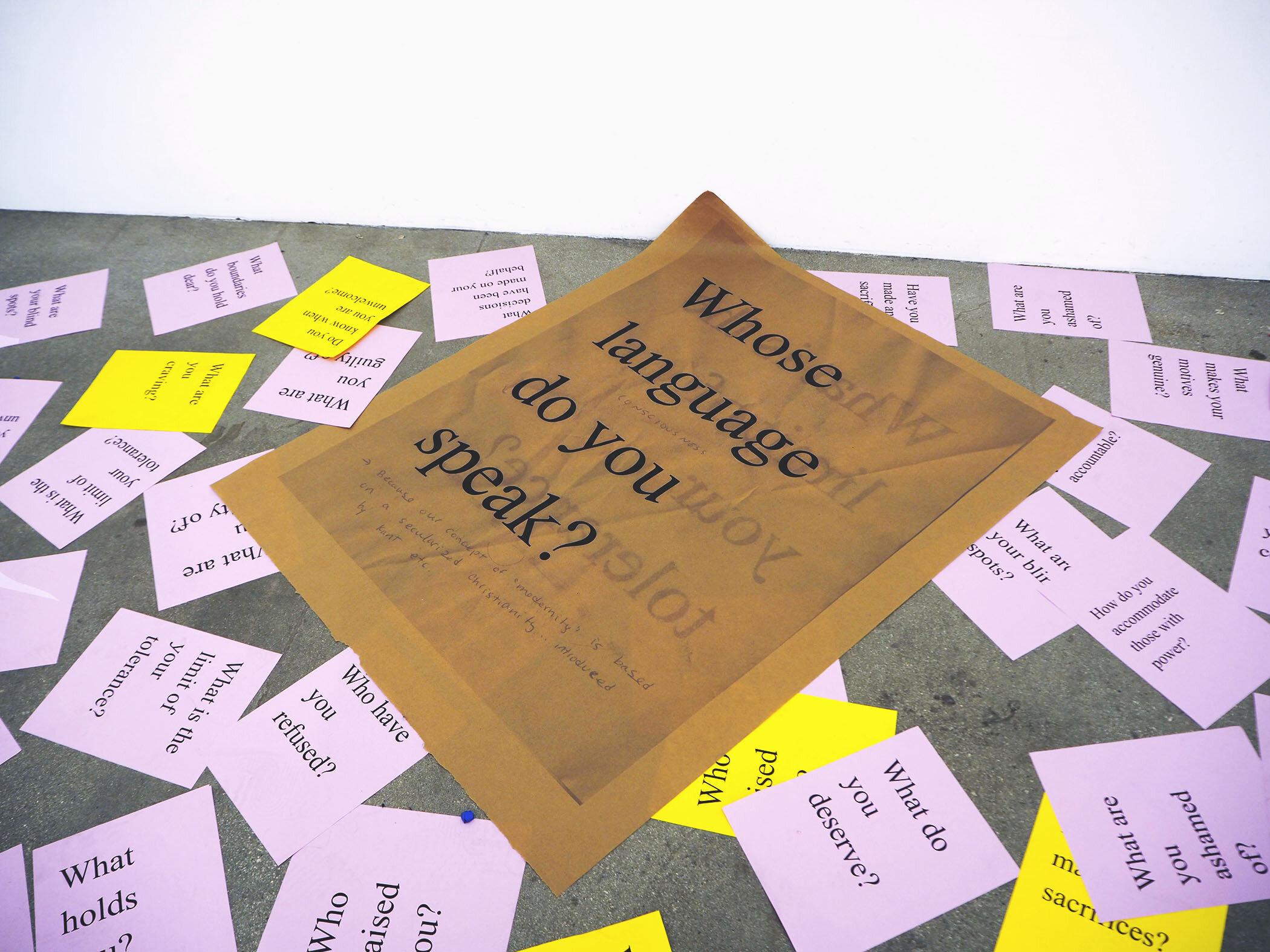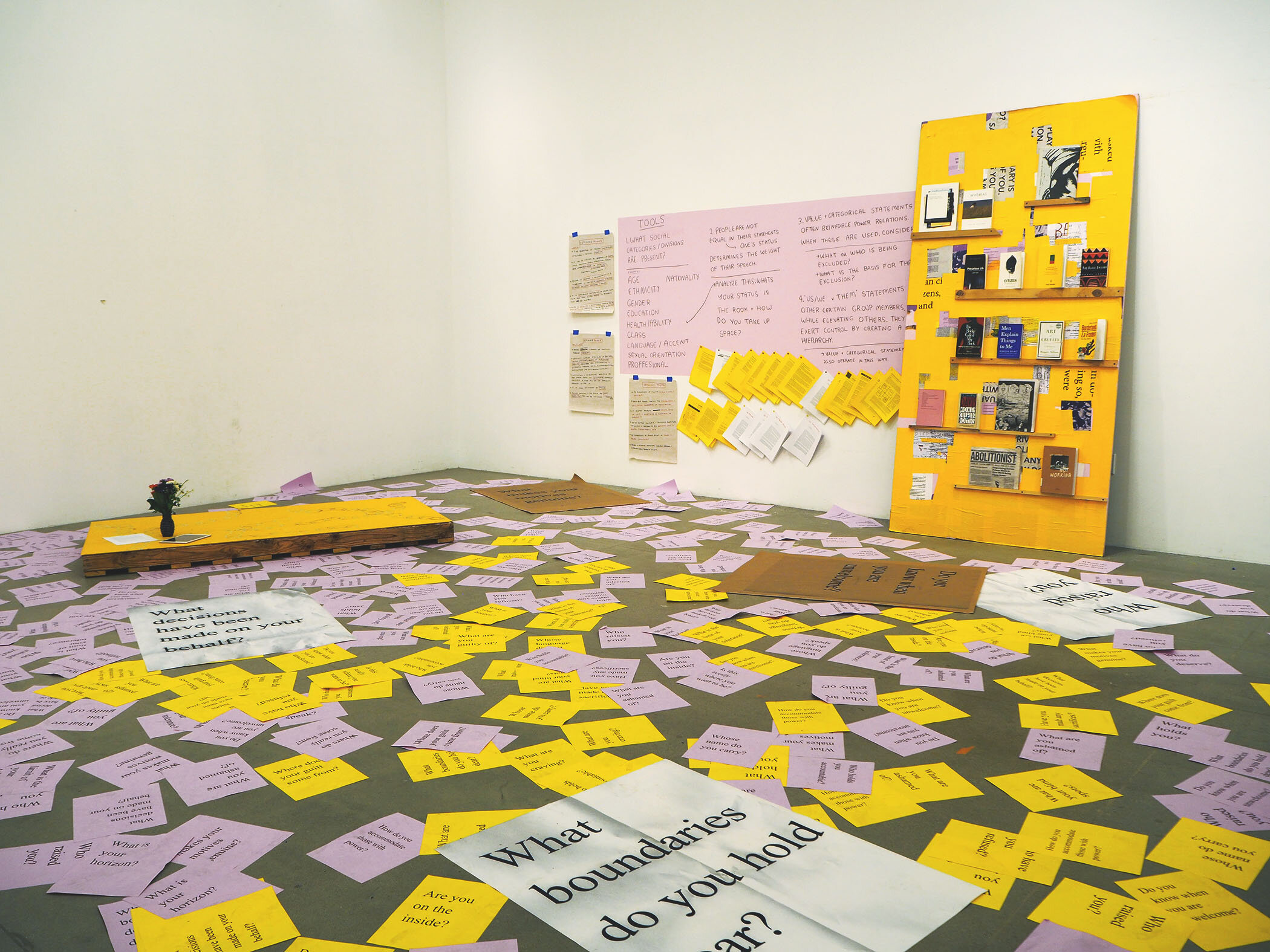Intimate Collectivity & Invisible Power
University of California, Los Angeles & GenderFail Press
This work was originally installed at the University of California, Los Angeles and later published as part of Radical Softness as a Boundless Form of Resistance by GenderFail Press
Los Angeles, CA, Winter 2018
Intimate Collectivity & Invisible Power is an installation, workshop, and conversation-based artwork that explores invisible power dynamics between graduate art students in a critique space at the University of California Los Angeles. Invisible power, as defined by John Gaventa in Finding Spaces for Change: A Power Analysis, is a dimension of power that (partly) shapes the psychological and ideological boundaries of our participation in social and political contexts. Unlike visible power, which can be identified in concrete forms, such as policies or laws, and hidden power, which can be identified through analysis, for example, by considering who might be missing from the decision-making table, invisible power is much harder to trace. Through the invisible dimension of power, we reproduce and reinforce existing power relations in ways we are unaware of. This reproduction of power relations is partly created by “processes of socialization, culture and ideology [that] perpetuate exclusion and inequality by defining what is normal, acceptable and safe.”
During my first year as a graduate student at the University of California Los Angeles, I experienced a heightened level of harmful behaviors and thought patterns in myself that were disseminated and reinforced by the dominant culture of the program, including: the suppression of my own emotional sensibilities; deference to socio-political hierarchies, self-silencing; and other troubling behaviors that were less apparent in me in other spaces. I also noticed troubling interactions between other students in the critique space that echoed my internal experiences, including: the silencing of certain voices; the dominance of other voices; plainly prejudicial speech; and more. Using the lens of invisible power, I understood that these internal thought-patterns and external behaviors were partly a result of the many unacknowledged and unaddressed power dynamics within our group.
In response, I organized a workshop with four group members who identified themselves as having similar experiences to my own. We held the workshop outside of the critique space with the aim of equipping ourselves with strategies and tools for addressing the behavioral and psychological forms that harmful invisible power dynamics have taken in our critique group. The following day, during our critique session, all students were invited into the space where our workshop was held. The space included the tools, strategies, and resources we used within the workshop. The four students who attended the workshop had access to more knowledge about the work than the rest of the students. This situation shifted existing power dynamics and angered certain members of the group.
During my first year as a graduate student at the University of California Los Angeles, I experienced a heightened level of harmful behaviors and thought patterns in myself that were disseminated and reinforced by the dominant culture of the program, including: the suppression of my own emotional sensibilities; deference to socio-political hierarchies, self-silencing; and other troubling behaviors that were less apparent in me in other spaces. I also noticed troubling interactions between other students in the critique space that echoed my internal experiences, including: the silencing of certain voices; the dominance of other voices; plainly prejudicial speech; and more. Using the lens of invisible power, I understood that these internal thought-patterns and external behaviors were partly a result of the many unacknowledged and unaddressed power dynamics within our group.
In response, I organized a workshop with four group members who identified themselves as having similar experiences to my own. We held the workshop outside of the critique space with the aim of equipping ourselves with strategies and tools for addressing the behavioral and psychological forms that harmful invisible power dynamics have taken in our critique group. The following day, during our critique session, all students were invited into the space where our workshop was held. The space included the tools, strategies, and resources we used within the workshop. The four students who attended the workshop had access to more knowledge about the work than the rest of the students. This situation shifted existing power dynamics and angered certain members of the group.


